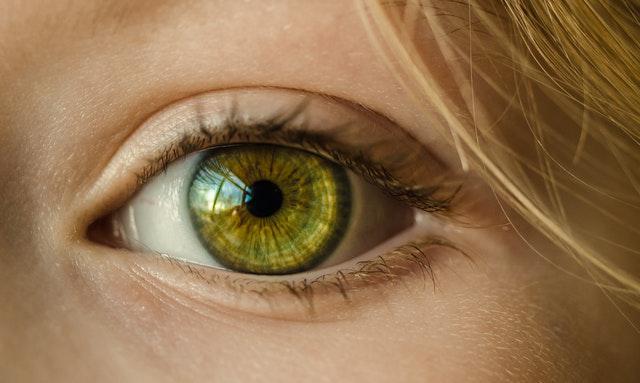February is national age-related macular degeneration (AMD) and low vision awareness month. AMD is a progressive eye condition with no cure, and it generally affects older people.
It can blur our central vision and make it harder to do things like riding a bike or driving a car. Millions of Americans are affected by AMD, and the numbers are only projected to rise with the aging population.
We wanted to shed some more light on AMD and share some tips on reducing your risk of developing this condition. There are also some promising technologies on the horizon that may help people suffering from low vision issues.
What is AMD?

Source: macularsociety.org
AMD is a chronic eye disease that progresses over time. It affects our central vision and causes damage to the retina. This disease attacks the macula portion of the retina, which is responsible for controlling vision in our direct line of sight. Side and night vision usually aren’t affected by AMD.
AMD slowly deteriorates a person’s vision and can cause blind spots, blurry vision, gray areas, and distortions. As people get older, they may start to notice subtle changes in their vision. People can develop AMD due to a combination of both genetic and environmental factors, although some other factors are still unknown.
There are two types of macular degeneration: dry and wet. Almost all AMD causes are dry ones, which develop as light-sensitive cells in the macula deteriorate. Wet AMD is more aggressive but only makes up 10% of all AMD cases.
In wet AMD, new blood vessels form behind the retina and grow into the macula. These vessels can burst easily and cause fast damage to the eye and central vision loss.
Who is at Risk for AMD?
Age is the biggest risk for AMD as it generally affects people over the age of 60. Other risk factors for this disease include:
- Family history of AMD
- Caucasian background
- Smoking cigarettes
- High blood pressure
- High cholesterol
- Obesity
- Heart disease
Diabetes & AMD

Diabetes can cause damage to tiny blood vessels throughout a person’s body. This can lead to AMD if damage occurs to the delicate tissue and blood vessels in the retinal area of the eye. Diabetic macular edema (DME) is a condition that affects half of the people with diabetic eye disease.
It occurs when blood vessels in the retina leak fluid and cause swelling in the macula. This can lead to blurry vision among people affected by DME. Managing diabetes effectively is the best way for diabetics to reduce their risk of eye disease.
Eating healthy foods, controlling blood sugar levels, and staying active are all great ways of lowering risk levels. Additionally, diabetics should regularly visit their doctors and get annual eye exams to prevent serious eye problems from developing.
How Can AMD Be Prevented?

As with many other diseases, AMD risk can be reduced by practicing a healthy lifestyle. This includes eating good foods, staying active, and avoiding cigarettes. Smokers are up to four times more likely to have AMD than those who have never smoked. They are also more likely to develop AMD up to a decade earlier than non-smokers.
When it comes to diet, eat lots of green, leafy vegetables such as kale and spinach. Fruit can also be very helpful in this regard. Fish also contains omega-3 fatty acids which can improve eye health if consumed once or twice a week.
Staying active can help your body keep blood pressure and cholesterol levels under control. Although they may seem unrelated to eye health, everything is connected in our bodies. Keeping your weight in a healthy range and preventing obesity makes it easier for your body to maintain healthy eyesight. Sunglasses, hats, and other protective gear can also be very helpful in protecting our eyes from harmful UV rays.
Conclusion
Although there is no cure for AMD, there are many ways in which we can reduce our risk. Following a healthy lifestyle, getting annual eye exams, and avoiding cigarettes are some of the things we can do to lower our likelihood of developing this eye disease.
If you have diabetes, contact us to schedule a diabetes management consultation and receive a referral for a retinal eye exam.

AUTHOR
Maneeza Hasan Maneeza is a content marketing professional from Los Angeles, California. She loves to create content that helps people live better lives. To learn more about her please visit her website at www.maneeza.com

